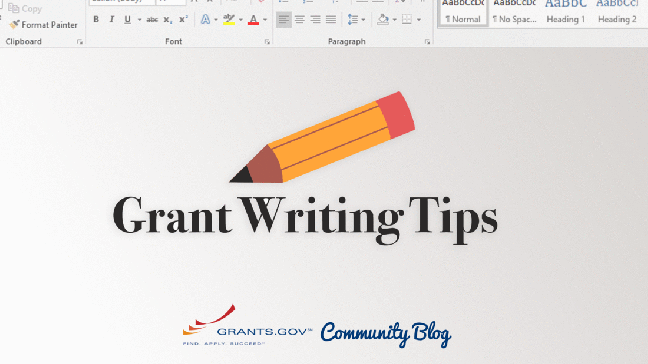Need statements, program narratives, and discussions of impact aren’t the only parts of a federal grant application that require the touch of a good writer. The budget narrative – sometimes called the budget justification or budget detail – can also benefit from a skilled wordsmith.
Here, though, the burden carried by the writer weighs heaviest in the areas of precision, thoroughness and organization – and less so in the areas of color and creativity.
What follows are budget narrative writing tips that have been curated from a wide range of federal agency resources.

What Is a Budget Narrative?
A budget narrative provides explanations about line items from the standard budget. In federal grant applications, a budget narrative is sometimes called a budget justification or a budget detail.
In many cases, grant-making agencies will provide specific instructions about the makeup of the budget narrative. These instructions should be followed as closely as possible.
Sometimes, agencies will even provide templates or examples that can be used by applicant organizations. The following links will take you to examples of budget narratives provided by the corresponding grant-making agency:
- National Oceanic and Atmospheric Administration
- United States Agency for International Development
- Substance Abuse and Mental Health Services Administration (SAMHSA)
- U.S. State Department
A Google search for “federal grant budget narrative .gov” will lead you to many other examples and guidance documents.
Tip: Make a clear connection between your budget and the program’s goals and objectives.
Your budget narrative explains in paragraph form how specific line items in the budget will come together to contribute to an overall objective – or set of objectives.
 “Remember that a budget is a plan,” reads the U.S. Department of Health and Human Services Health Resources & Services Administration’s guide “Tips for Writing and Submitting Good Grant Proposals”. Applicants should be sure to “match the budget with the goals and objectives.”
“Remember that a budget is a plan,” reads the U.S. Department of Health and Human Services Health Resources & Services Administration’s guide “Tips for Writing and Submitting Good Grant Proposals”. Applicants should be sure to “match the budget with the goals and objectives.”
Doing this requires from the writer precision and context – for example, a concise explanation why the hiring of a social media manager will be necessary to achieve targets in an online public awareness campaign.
Without making a clear, explicit connection to a program objective, the applicant risks the reviewers potentially misjudging – or mis-underestimating – a budget expense’s value to the overall success of the project.
In the example provided by SAMHSA, the use of a certified trainer is justified by contextualizing the role in the broader program: “Certified trainers are necessary to carry out the purpose of the statewide consumer Network by providing recovery and wellness training, preparing consumer leaders statewide, and educating the public on mental health recovery.”
Tip: Being thorough helps build credibility with reviewers.
“While the amount of detail provided for any budget may vary depending on the type of project and its requirements, the more comprehensive, complete, and thorough the budget and budget narrative are, the more credible your proposal will be,” reads advice from the Justice Department’s Bureau of Justice Assistance (BJA), which has created a helpful Grants 101 page on developing a budget.
For example, if you are providing services to clients, an HHS guide from the Office of Population Affairs states that applicants “should describe how many clients are you expecting to serve, the unit cost of serving each client, and how this is cost effective.”
By listing unit cost and explaining cost effectiveness, applicants help to anticipate and address reviewers’ questions before, or as, they are being formulated.
Tip: Ensure your language conveys a sense of stewardship for the government’s investment.
One common mistake in budget narratives, according to the BJA, is “not demonstrating …how an applicant will maximize cost effectiveness of award expenditures, in particular, to justify the proposed costs in relation to potential alternatives to achieving the same project purpose and objectives.”
Demonstrating – whenever possible – that the applicant has designed the most cost-effective solution possible affirms your focus on maximizing the government agency’s investment.
Similar advice is echoed by the U.S. Department of Agriculture, which states that an effective budget narrative “tells the USDA exactly how you will spend its investment” and gives the agency confidence that “you did research and that your project costs are reasonable and well thought-out.”
This blog post is part of a series on grant-writing basics. Click here to browse through other series topics.


Well done! This post highlights a very important point which is the fact that budgets really matter. I’ve been told by a number of funders I’ve interviewed that this is one of the first pages they immediately turn to when reviewing a proposal because it cuts down to the nitty-gritty.
The narrative, when done correctly, can greatly boost the credibility of what you are proposing if it paints a clear picture to describe exactly how funds will be used.
The less vague this is the more likely you will get funded… especially if what you are proposing is effective and efficient. I have witnessed a number of proposals where the budget didn’t quite line up with what was written in the narrative.
This is a sure recipe for failure and your proposal will most likely be tossed in the rejection pile when this happens.
Everything is connected and should be building on the other.
The article is a good reminder of that fact and would-be-grant-writers will be wise to heed the above advice.
LikeLike
Great article. Thinking about budget constraints before your write your grant is so important. I’m bookmarking this site for later.
LikeLiked by 1 person
king about budget constraints before your write your grant is so important. I’m bookmarking this site for later.
LikeLike